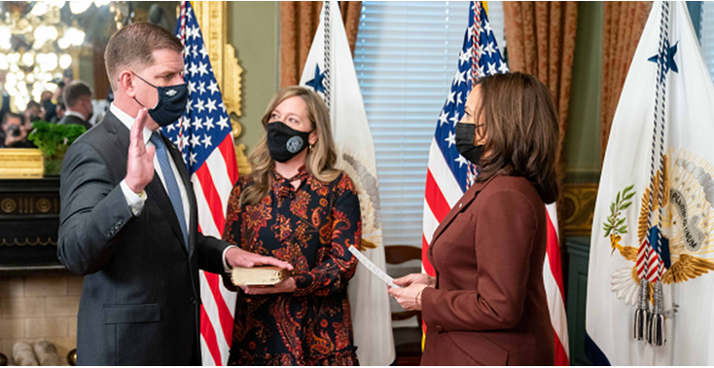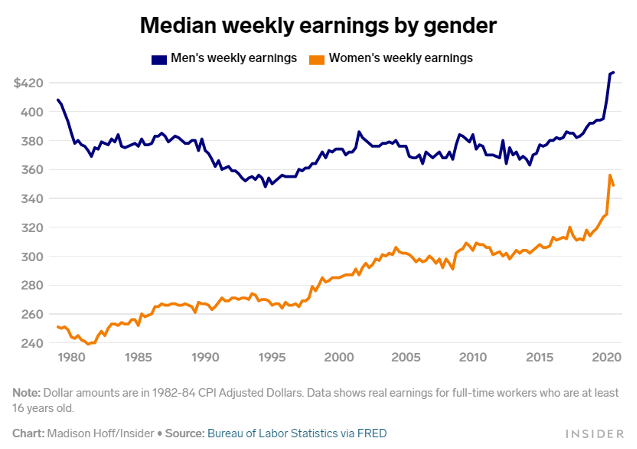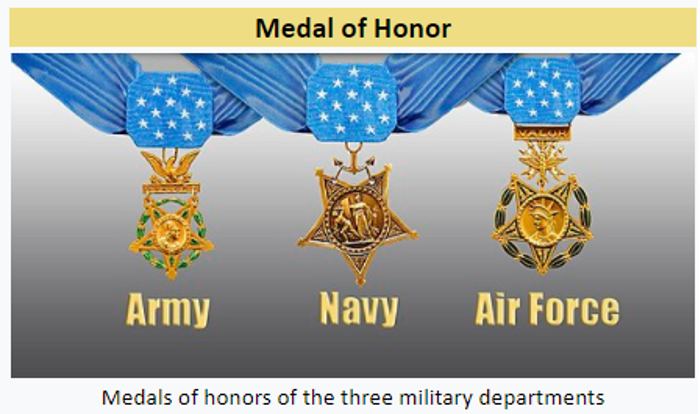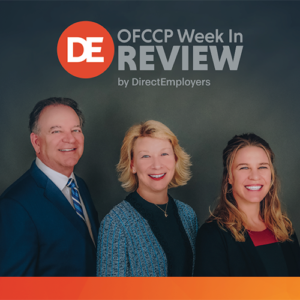 The DE OFCCP Week in Review (WIR) is a simple, fast and direct summary of relevant happenings in the OFCCP regulatory environment, authored by experts John C. Fox, Candee Chambers and Jennifer Polcer. In today’s edition, they discuss:
The DE OFCCP Week in Review (WIR) is a simple, fast and direct summary of relevant happenings in the OFCCP regulatory environment, authored by experts John C. Fox, Candee Chambers and Jennifer Polcer. In today’s edition, they discuss:
- New Secretary of Labor Confirmed Unanimously By Democrats
- EEOC Reaffirms Commitment to Protect Asian Americans and Pacific Islanders
- USDOL To Create Registered Apprenticeship Technical Assistance Centers Of Excellence
- Congressional Democrats Introduce Resolutions to Rescind the EEOC’s Final Rule Requiring Transparency to Employers in Conciliation of Charges
- Improving Disability Employment Outcomes–Finale Conversation of the DE Talk Podcast Released
- Recognition of Equal Pay Day
- Spoiler Alert: Religious Exemption Changes For Federal Contractors On The Horizon
- National Medal of Honor Day
- The Tip Rule Saga Continues…Comment Now!
- Biden Announces Intent to Nominate Jocelyn Samuels for 5-year Term as EEOC Commissioner
- New Solicitor of USDOL in the Pipeline
- EEO-1 Data Collection Portal To Open April 26, 2021
Monday, March 22, 2021: New Secretary of Labor Confirmed Unanimously By Democrats
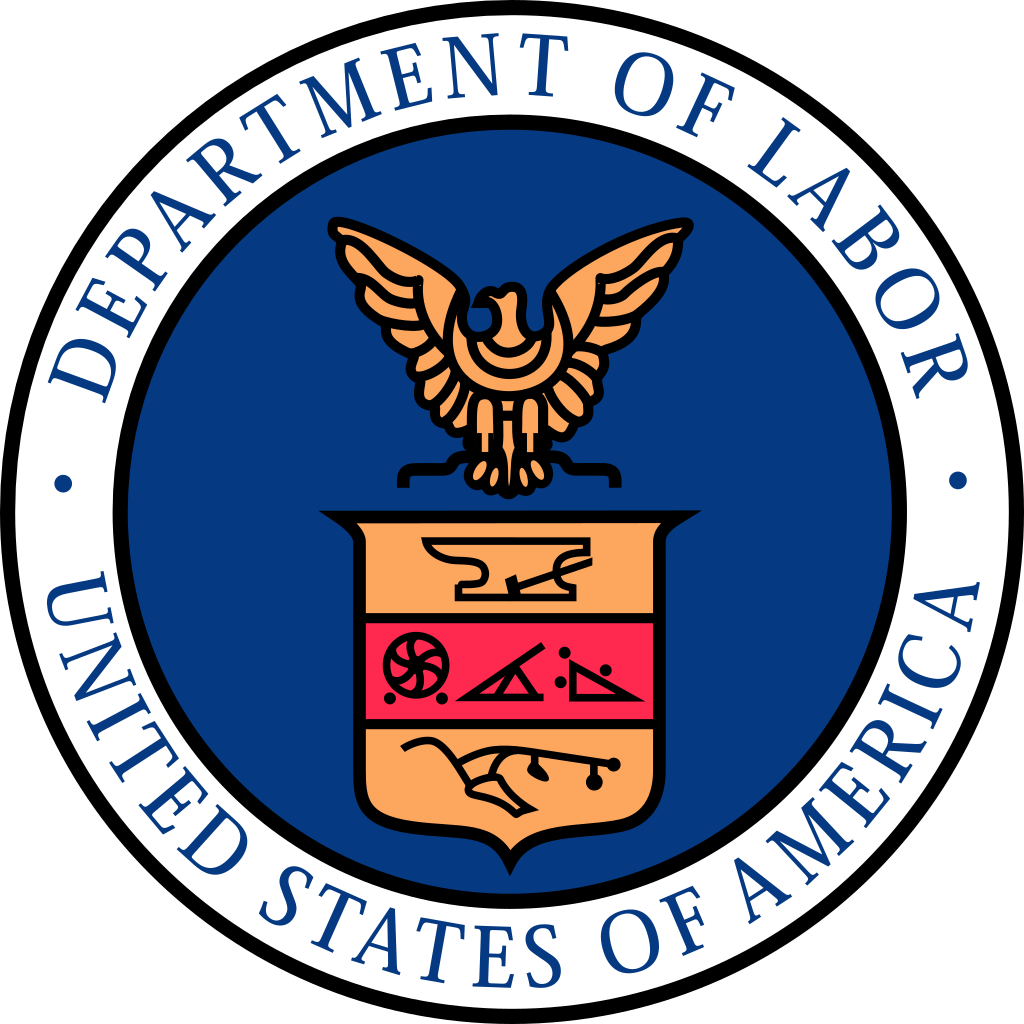
“As the son of immigrants and a former union laborer, I share their deep commitment to building an economy that works for all. I have been a fighter for the rights of working people throughout my career, and I remain committed to ensuring that everyone – especially those in our most marginalized communities – receives and benefits from full access to economic opportunity and fair treatment in the workplace. I believe we must meet this historic moment and, as the nation’s Secretary of Labor, I pledge to help our economy build back better.”
The Secretary ended his first week by meeting with the American Job Center* staff at the Department of Employment Services in northeast Washington, D.C. These frontline workers have spent the past year helping people get the critical unemployment benefits they need during the pandemic.
Learn more from his blog, Getting to Work: My First Week at the Department of Labor.
*DE Members – We list your applicable jobs at this location.
Monday, March 22, 2021: EEOC Reaffirms Commitment to Protect Asian Americans and Pacific Islanders

“The Commission condemns the recent violence and discrimination against AAPI persons in the strongest possible terms,” said EEOC Chair Charlotte A. Burrows. “Hatred, xenophobia, and racism violate our nation’s core principles. The Commission stands in solidarity with the victims, their families, and AAPI communities across the nation, and we pledge to work together to address harassment, bias, and discrimination in the workplace.”
Monday, March 22, 2021: USDOL To Create Registered Apprenticeship Technical Assistance Centers Of Excellence

Registered Apprenticeships Programs (RAPs)
The USDOL believes Registered Apprenticeship Programs are proven, industry-driven, high-quality career pathways where employers can develop and prepare their future workforces. Workers can obtain paid work experience, related instruction, and a portable and industry-recognized credential.
Employers may choose to register their programs (RAP) with the USDOL to show prospective job seekers that their apprenticeship program meets national quality standards. RAPs exist in several industries – including construction, energy, health care, information technology, financial services, and advanced manufacturing – and have strong retention rates. 93% of apprentices who complete a RAP retain employment, with an average annual salary of $70,000.
“The funding opportunity announced today will help provide the technical assistance and expertise needed as we expand and modernize America’s Registered Apprenticeship Programs,” said Senior Advisor to the Secretary of Labor Patricia Smith. “These Centers of Excellence will help increase opportunities for all of America’s workers to pursue Registered Apprenticeships.”
What are “Technical Centers of Excellence?”
According to the press release, “Technical Centers of Excellence” are designated entities providing technical expertise as part of a cooperative agreement tasked to expand, modernize, and diversify Registered Apprenticeships on a national scale. Areas of technical expertise include:
- Diversity and Inclusion
- Strategic Partnerships and System Alignment
- Apprenticeships Occupations and Standards
- Data and Performance and Best Practices
These centers will collaborate with State Apprenticeship Agencies and department-funded registered apprenticeship investments to build on and expand existing apprenticeship efforts already in place.
“Registered Apprenticeship is already one of our premier employment-based career development programs,” said Principal Deputy Assistant Secretary for Employment and Training Suzi LeVine. “However, there is still not enough diversity among registered apprentices and we need to do more to make sure that the nation’s apprentices truly reflect the communities in which they work and that they engage.”
More on Recent Events On Apprenticeships
See our story from February 17, 2021: “Biden Administration Pulls Back on Industry Designed Apprenticeship Programs to Drive Apprenticeships Back to Union-Supported Registered Apprenticeship Programs.”
The National Conference of State Legislatures published its fourth and final report, “Apprenticeships: A Pipeline for an Inclusive Recovery,” in a series focused on opportunities and challenges stemming from the pandemic and its impact on the employment of individuals with disabilities. Among other things, the final report highlights resources for creating inclusive apprenticeship programs.
Tuesday, March 23, 2021: Congressional Democrats Introduce Resolutions to Rescind the EEOC’s Final Rule Requiring Transparency to Employers in Conciliation of Charges
The Congressional Review Act explained
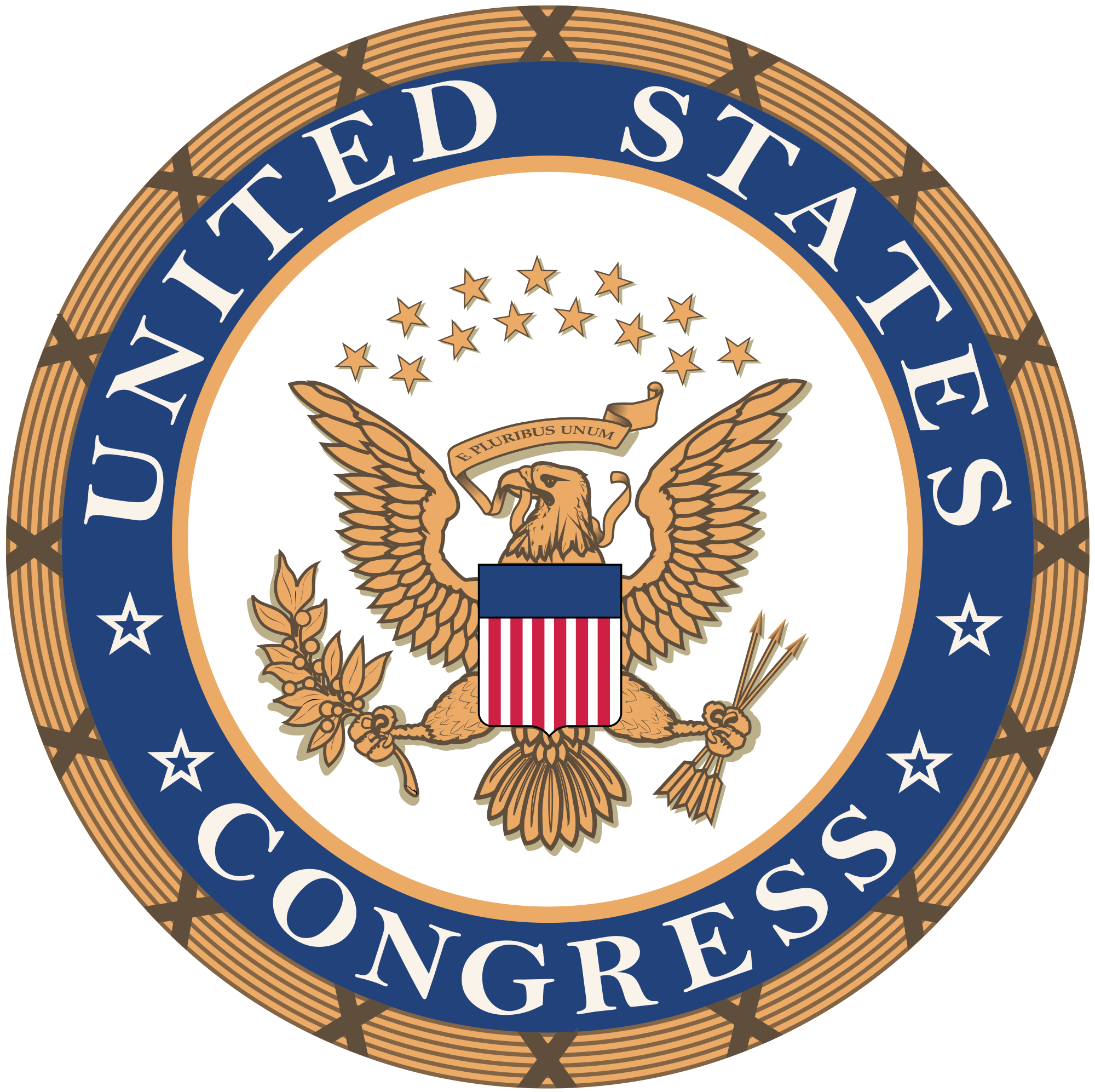
The Relevant Action
Representative Robert Scott (D-Va.) and Senator Patty Murray (D-Wash.), the chairpersons of the House Committee on Education and Labor and the Senate Committee on Health, Education, Labor & Pensions respectively, filed resolutions of disapproval in their respective Committees based on their contention the Final Rule: (1) gave employers unfair advantages in litigation by providing premature access to case information; (2) increased the risk of retaliation by making it easier for employers to demand identities of victims and witnesses; and (3) will increase the backlog of cases due to the new procedural requirements in the conciliation process. Congressman Scott issued a Press Release quoting Senator Murray as follows: “This unfair, anti-worker rule was designed to tip the scales in favor of employers when workers try to make sure their rights on the job are enforced. There’s absolutely no reason it should stay on the books.”
The WIR reached out to EEOC Chair Burrows to interview her to obtain her first-hand reaction to the Congressional resolutions. Chair Burrows was not available for the five days before press time but responded through EEOC spokesperson Christine Saah Nazer of the Commission’s Office of Communications & Legislative Affairs:
“The Conciliation Rule harms workers and undercuts enforcement of workplace civil rights laws. Overturning this rule through the Congressional Review Act would strengthen the federal government’s ability to protect civil rights.”
When pressed to elaborate on the conclusion that the EEOC’s Conciliation Rule would “harm workers and undercuts enforcement of workplace civil rights law,” Ms. Nazer declined to further respond as to how that feared harm and enforcement dilution would in fact occur.
The Rule the Resolution Seeks to Overturn
The Final Rule the EEOC issued during the Trump Administration required that in any conciliation process involving a claim in which the EEOC found reasonable cause, the EEOC would provide the employer with:
- a written summary of the known facts and non-privileged information the EEOC relied on in its reasonable cause finding, including identifying the aggrieved individuals or groups of aggrieved individuals unless anonymity was requested;
- a written summary of the EEOC’s legal basis for finding reasonable cause, including an explanation as to how the law was applied to the facts;
- the basis for the EEOC’s proposed monetary or other relief sought in any initial conciliation offer;
- information whether the EEOC designated the case as a systemic, class, or pattern or practice claim; and
- at least 14 calendar days to respond to an initial conciliation proposal.
Additionally, for age discrimination claims, the Final Rule required the EEOC to attempt to eliminate the alleged unlawful practice by informal methods of conciliation, conference, and persuasion. Upon failure of conciliation, the EEOC must notify the charging party, with such notice allowing the charging party to commence a civil action to enforce their rights without waiting for the lapse of 60 days required under law. At the time of the Final Rule’s publication in early January 2021, the EEOC issued a Press Release lauding the Final Rule as an opportunity to “outline [the EEOC’s] responsibilities in the conciliation process to fulfill its Congressional mandate and to increase the effectiveness of its efforts to achieve cooperation and voluntary compliance.”
Employer representatives lauded the Final Rule because it introduced much needed transparency to the conciliation process. “Under Title VII, the EEOC is mandated to attempt in the first instance to informally resolve charges of discrimination by way of conciliation. This requirement was upheld by a unanimous Supreme Court, and where a case can be resolved quickly, without costly and protracted litigation, all parties benefit,” said James A. Paretti, Jr., a former Chief of Staff and Senior Counsel to the acting chair of the EEOC and currently a shareholder with Littler Mendelson P.C. “The regulations put in place earlier this year set some very basic ‘ground rules’ for the process, notably providing employers or other respondents with some foundational information so that they can understand the nature of EEOC’s case, the parties for whom it is seeking relief, and how it has calculated its settlement demands, and thus be in a position to make a thoughtful counter-offer.”
What divides the Republican view of things from the Democrats’ view is that the Democrats want the EEOC (and the same is true at OFCCP) to have to comply with ONLY the statutory requirements of conciliation set out in Title VII (and in parallel with Executive Order 11246). That requirement is very modest in terms of required disclosure to employers following the SCOTUS’ Mach Mining decision which interpreted Title VII’s conciliation requirement. However, that low level of required disclosure has not promoted conciliation. Half of all EEOC Charge conciliation meetings fail, while less than 2% fail at OFCCP where the agency has exercised its discretion, as the EEOC’s Final Rule did, to supply more candid and transparent disclosure of the facts underlying the OFCCP’s investigation.
The Congressional Review Act
With the introduction of these resolutions, Congress now attempts to strike down the EEOC’s Final Conciliation Rule. With their attempted use of the Congressional Review Act, Democrats have now availed themselves of another avenue to rollback regulations the Trump Administration had issued. As previously reported, the Biden Administration has previously issued proposed rules to rescind previously published rules, as well as instituting a regulatory freeze delaying effective dates of implementation for other rules.
The Congressional Review Act itself provides Congress the ability to review, and by means of an expedited legislative process, overrule federal regulations issued by a federal government agency through passage of a joint resolution of Congress signed by the President. 5 U.S.C. § 802. Any resolution under the Congressional Review Act may address any federal regulation issued in the previous 60 days, as well as rules issued in the last 60 days of a previous Congress. 5 U.S.C. § 801(d)(1). A recent analysis estimated that the new Democratic Congress could use the Act to reach back to at least 1,490 Trump-era regulatory actions based on the Trump Administration’s flurry of regulatory activity in the months leading up to the inauguration of President Biden.
Given the 50/50 tie in the Senate, it is unclear whether Senate voting Rules will subject CRA rescission resolution votes to the normal 60% voting requirement or the 50% voting requirement Democrats hope for.
Important for Democrats is the fact that any resolution enacted under the Act is not subject to judicial review. 5 U.S.C. § 805. Furthermore, once repealed, the Congressional Review Act prohibits the federal agency from reissuing the rule in substantially the same form or issuing a new rule that is substantially the same. 5 U.S.C. § 801(b)(2). Thus, once the resolution of disapproval is enacted, the relevant rule is removed from the Code of Federal Regulations, and the regulations revert to what existed before the implementation of the at-issue rule.
The potential loss of proposed transparency in the conciliation process, without hope of return given the statutory limit discussed above, have understandably resulted in these resolutions being met with trepidation from employer representatives. As former EEOC senior official Paretti notes, “The effort to repeal these regulations is unfortunate, and will only result in less transparency in the conciliation process. I worry that in the absence of these procedural safeguards, we return to a world where the full weight of the federal government is brought to bear on an employer, who is given an excessive demand, little to no explanation or reasoning supporting it, and the message of ‘take it or leave it, we’ll see you in court.’ This doesn’t serve the interests of a charging party, who might otherwise obtain the relief they deserve promptly, rather than gamble on the uncertain outcome of years of litigation. Nor does the extended time and expense benefit a respondent who would like to see resolution of the matter, or an agency that is consistently underfunded, given its critical mission.” Given such heightened concern, it is anticipated that employer organizations will undertake extensive lobbying efforts to effectuate defeat of the pending resolutions.
Tuesday, March 23, 2021: Improving Disability Employment Outcomes–Finale Conversation of the DE Talk Podcast Released
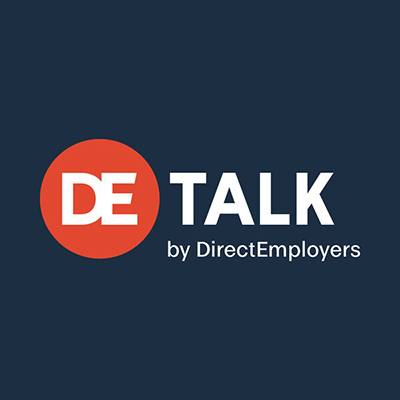
Tune in to the final episode of season two to explore how far the disability employment landscape has come in the last five years and how employers have moved through the maturity curve past basic compliance to competency to create inclusive workforces.
Listener Tip: This episode offers listeners a guided tour of NOD’s Disability Employment Tracker, as well as additional resources employers can use to benchmark their programs against other employers and identify areas of improvement and growth!
Missed episodes from Season Two? Subscribe to the DE Talk Podcast mailing list for alerts of new episodes coming your way later this year. You can also tune in to listen to missed episodes from Season One or Season Two online or through your preferred podcast provider of choice!
Wednesday, March 24, 2021: Recognition of Equal Pay Day

Early in the 20th century, women in the United States and worldwide began taking a stand. They demanded fair pay and better working conditions, voting rights, and legal rights. Since that time, women have made great strides toward equal pay, but there is still work to be done. President Biden stated,
“This year, Equal Pay Day falls in late March, which is a little bit better, but not much — from late April to late March. And, frankly, we shouldn’t be satisfied until Equal Pay Day is no longer even necessary to mention at all.”
EEOC Commissioner Charlotte Burrows broke it down even further in her statement,
“Women make just 82 cents for every dollar paid to men, meaning that women had to work for nearly 15 months to earn what men did in *2020. The pay gap is even worse for women of color, immigrant women and transgender women, reflecting the intersectional and compounding effects of gender, racial and ethnic bias.”
*According to Bureau of Labor Statistics data, in 2020, women’s annual earnings were 82.3% of men’s
The OFCCP also released a statement of support.
Source: Businessinsider.com
Wednesday, March 24, 2021: Spoiler Alert: Religious Exemption Changes For Federal Contractors On The Horizon

The concern is whether First Amendment religious rights will trump the statutory rights of gays, lesbians and transsexuals. The SCOTUS has not yet had an opportunity to address this collision of rights. When OFCCP does rescind OFCCP’s Religious Discrimination, it is expected that religious groups will file lawsuits to block the rescission.
Catch Up Now, Before the Next Headline Hits!
December 14, 2020: See the WIR Bonus Blog: “USDOL Announced A Coming Controversial OFCCP Final Rule Recognizing Expanded Religious Defenses, Even While Only Mirroring the Recent Case Law Which Established Them, Published the Rule Two Days Later, And Then Two Days Later Drew Angry Criticism From House Speaker Pelosi”
Thursday, March 25, 2021: National Medal of Honor Day
The Medal of Honor is the United States of America’s highest military honor. In the name of Congress, it is awarded by the President and is the only military decoration worn around the neck. Its recipients, our most gallant heroes, are the only individuals whom the President and military of all ranks salute as a matter of custom.
There are three versions of the Medal of Honor. The Department of the Navy created the first version in December 1861. On March 25, 1863, Secretary of War Edwin Stanton, presented the first Medals of Honor for the Army to six members of “Andrews Raiders” for volunteering and participating during an American Civil War raid in April of 1862. The Department of the Air Force used the Department of the Army’s version until they received their own distinctive version in 1965. The Marine Corps’ personnel and the Coast Guard receive the Navy version.
In 1990, the United States Congress designated March 25th of each year as National Medal of Honor Day. More than 3,500 soldiers, sailors, airmen, Marines, and coastguardsmen have received this high honor since its creation. See a complete list of Honor recipients in the National Medal of Honor Museum.
Thursday, March 25, 2021: The Tip Rule Saga Continues…Comment Now!
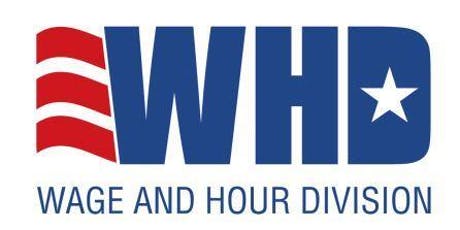
However, in an announcement about the new Notices, the Division stated,
“After considerable review, the Department will allow several portions of the 2020 Tip final rule implementing the 2018 Consolidated Appropriations Act to go into effect, including the following:
- A prohibition on employers, including supervisors and managers, keeping tips received by workers, regardless of whether the employer takes a tip credit. This prohibition establishes significant protections for tipped employees to prevent their tips from being diluted.
- The ability of an employer that does not take a tip credit to include non-tipped workers, such as cooks and dishwashers, in nontraditional tip-sharing agreements and, by doing so, boost their earnings.”
The two new Notices are as follows.
- A Notice of Proposed Rulemaking (NPRM) further extends (to December 31, 2021) the effective date of the existing Tip Rule. Comment (on or before April 14, 2021) on the proposed delay and the substance of the portions being delayed.
- A Notice of Proposed Rulemaking (NPRM) to withdraw and re-propose two portions of the Rule and seek comments on a third. See these details below.
What are the Proposals?
- To withdraw and re-propose the portion of the Rule incorporating the new provisions of the Consolidated Appropriations Act of 2018 (CAA) authorizing the assessment of civil money penalties (CMP) for violations of section 3(m)(2)(B) of the Consolidated Appropriations Act.
Lifeline: 3(m)(2)(B) of the CAA prohibits employers from keeping their employees’ tips “for any purposes, including allowing managers or supervisors to keep any portion of employees’ tips” even if they do not claim a tip credit.
- To withdraw and re-propose the portion of its CMP regulations addressing willful violations (specifically, 29 CFR 578.3 and 579.2). The goal is to make the regulatory language consistent with the way the Department litigates willfulness issues and to address the appellate courts that have, for example, “urge[d]” it to reconsider those regulations to ensure their consistency with the Supreme Court’s interpretation of the meaning of “willful” in the FLSA.
- To seek comments on whether to withdraw and re-propose a third portion of the Rule concerning the tip credit use when employees perform both tipped and non-tipped work.
Speak Now
The Department seeks comments on or before May 24, 2021, on:
- whether to revise the portion that addresses the statutory term “managers or supervisors” to better understand those who may receive tips, and
- how to improve the recordkeeping requirements
Hungry For More?
See our story last week as we break down the specifics in anticipation of this delay.
Friday March 26, 2021: Biden Announces Intent to Nominate Jocelyn Samuels for 5-year Term as EEOC Commissioner

If the Senate is unable to act on her nomination for this additional 5-year term before her current term of office expires on July 1, 2021, Commission rules will allow Ms. Samuels to remain in office through the end of 2021.
Friday, March 26, 2021: New Solicitor of USDOL in the Pipeline

Monday, March 29, 2021: EEO-1 Data Collection Portal To Open April 26, 2021

The deadline for submitting the data will be Monday, July 19, 2021. Per the news release,
“Recognizing the continuing differential impacts of the pandemic on workplaces nationwide and the requirement to submit two years of EEO-1 data, the EEOC is extending the data collection period this year from 10 weeks to 12 weeks to provide employers additional time to file.”
Additional Details
- The EEO-1 Component 1 collects workforce data from employers with 100 or more employees (and federal contractors with 50 or more employees).
- The EEOC will begin to formally notify EEO-1 filers via email starting on March 29, 2021.
- There is no Component 2 (“Hours Worked” and “Pay Data” reporting required for either year 2019 or 2020.
The EEOC will open the 2020 EEO-3, 2021 EEO-4, and 2020 EEO-5 later this year.
THIS COLUMN IS MEANT TO ASSIST IN A GENERAL UNDERSTANDING OF THE CURRENT LAW AND PRACTICE RELATING TO OFCCP. IT IS NOT TO BE REGARDED AS LEGAL ADVICE. COMPANIES OR INDIVIDUALS WITH PARTICULAR QUESTIONS SHOULD SEEK ADVICE OF COUNSEL.
SUBSCRIBE.
Compliance Alerts
Compliance Tips
Week In Review (WIR)
Subscribe to receive alerts, news and updates on all things related to OFCCP compliance as it applies to federal contractors.
OFCCP Compliance Text Alerts
Get OFCCP compliance alerts on your cell phone. Text the word compliance to 55678 and confirm your subscription. Provider message and data rates may apply.

